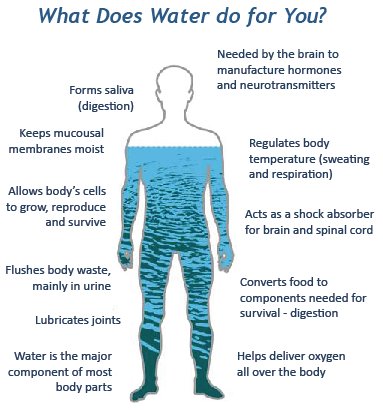The Flu or a Cold?
 Is It a Cold or Flu? How to Tell the Difference
Is It a Cold or Flu? How to Tell the Difference
This article is not intended to diagnose or determine if you have a cold or flu, simply as a quick reference to distinguish the two. I have collected and compiled as much simplified information as possible to help you identify your symptoms. However, there is no substitute to seeing you family doctor to validate your symptoms.
Colds and Influenza have so much in common that it can sometimes be hard to tell them apart. Both caused by viruses causing your airways to become infected. They share common symptoms that can leave you feeling miserable. You swear it’s a cold, your friend thinks it’s the flu, and the dozens of meds at the pharmacy that promise to make you feel human again claim to target both. So does the difference matter?
Absolutely, says Susan Rehm, MD, medical director of the National Foundation for Infectious Diseases. The influenza virus causes the flu, and since just a few variants of the virus exist, it’s become relatively easy to prevent, with a flu shot, or treat once you’ve got it.
Cold’s can be trickier. The rhinovirus is often responsible, but more than 200 other viruses can trigger the common cold—which means anti-viral prescriptions aren’t typically an option. Instead, over-the-counter symptom-relievers and home remedies are your best bet—but you still need to tread carefully. To get the last word on how to treat—and how not to treat—the common cold and flu, we consulted experts from the field. Here are their tips.
It’s the flu if…
“It hits you like a bolt of lightning,” says Steven Lamm, MD, internist and faculty member at NYU School of Medicine and a frequent guest doctor on The View. “You’ll likely run a fever of above 101F, and you’ll be flat out,” says Dr. Lamm. Chills, fatigue, muscle aches, and tightness of the chest are also characteristic of the flu. You might have a cough, or a runny nose, but you’re less likely to suffer from upper respiratory symptoms than you are with the cold.
What to do…
Get to the doctor—and fast. “The prescription-only anti-viral medications Tamiflu and Relenza must be taken within 48 hours of the onset of the symptoms,” says Karen Hill, MD, the founder of Internal Medicine and Pediatric Associates in Houston. The treatment will reduce the intensity of symptoms, hasten recovery, and significantly decrease the chances of you developing complications such as pneumonia or bronchitis.
What not to do…
Taking several over the counter (OTC) drugs to treat your symptoms can be dangerous, causing you to inadvertently double-dose on any one ingredient, warns Dr. Rehm. “Combination meds sometimes contain acetaminophen without advertising it on the front of the box. If you also take, say, Tylenol, you’re in danger of toxification.”
Antibiotics are another no-no, says Dr. Lamm, because they target bacteria—not viruses. There’s a caveat, though: “When complications develop, like if someone coughs up green phlegm spotted with blood, this signals a bacterial infection, and here antibiotics could be appropriate,” says Dr. Lamm.
It’s a cold if…
“The symptoms are predominantly above the neck,” explains E. Neil Schachter, MD, author of The Good Doctor’s Guide to Colds and Flu. Runny nose, cough, watery eyes, sore throat, congestion, and sneezing signal a cold, and these unpleasant symptoms often build up over a day or two. “You may feel achy or have a fever, but these will be much less severe than with the flu,” says Dr. Schachter.
What to do…
To shave a few days off a cold, take daily 250-500mg of vitamin C at the onset of the illness, says Dr. Schachter. “But there’s no definitive evidence that this works, and too huge amounts will irritate your stomach,” he warns—but it’s worth a shot. Zinc lozenges, such as Cold-Eeze, taken regularly over 48 hours may potentially also help. If your symptoms get bad, hit the pharmacy or your local health food store. Antihistamines can dry up your sinuses, or, for a more natural remedy, Hill suggests a saline nasal spray. “Nasal passages are where the virus replicates and enters into your system,” explains Dr. Hill. “By rinsing them out you’re effectively flushing out some of the virus.”
What not to do…
If you have a mild fever—below 100°F—don’t necessarily reach for the fever reducer, advises Dr. Lamm. “Unless you’re in a high-risk category, fever can be your body’s way of fighting off the infection.” Instead, you may just be better off getting rest and drinking plenty of fluids to make sure you don’t get dehydrated from sweating. You should also avoid decongestants, says Dr. Hill. These thicken mucus and reduce the swelling of the nasal passages, making it easier breathe—but they can also lead to a rebound effect: “They work well the first time,” says Dr. Hill, “but with every subsequent use you’ll have to administer more, and you’ll have to medicate more frequently for relief.”
There are enough differences, though, that may help you figure out which one you have. That can make a difference in what you do to treat your symptoms and keep it from going around.
Symptoms
It’s true that you can get a cold anytime — spring, summer or fall, but most likely in winter. Flu season typically runs from November through March, although you can get the flu in October or as late as May.
You can catch the flu at other times. But symptoms outside of flu season are more likely to be from a cold or an allergy.
Flu symptoms usually come on faster than cold symptoms. Colds may take two or three days to develop. Normally, you start feeling the flu over just two to three hours.
Flu tends to be much worse than a cold. And the flu, especially in children and among older people, is more likely to lead to serious health problems such as pneumonia and a hospital stay.
Influenza vs. Common Cold
This chart features some tips to help you differentiate between the symptoms of influenza and the common cold. Rarely, bur sometimes symptoms may not be enough for your doctor to diagnose if you have a cold or the flu, he may order a test to determine what you have.
| Symptom | Cold | Flu |
| Fever | Rare | Fever between 100 and 102 in most cases; typically lasts 3-4 day |
| Chills | Not common | About half of people with flu get them. |
| Muscle or body aches | Not common. If they do occur, usually mild | Common and often severe |
| Headaches | Not common | Most cases; may be sudden |
| Feelings of fatigue, weakness | May occur, generally mild | Moderate to severe fatigue and weakness; may last up to 2-3 weeks |
| Cough | Common, generally mild to moderate, usually produces phlegm | Dry cough (no phlegm) that may be severe; may last several weeks |
| Sneezing and stuffy nose | Common. Stuffy nose may last about a week. | Sometimes |
| Sore throat | Common | Sometimes |
| Chest discomfort | Sometimes; generally mild | Common; may be severe |
| Vomiting and diarrhea | Unusual | Not usual; most often in children |
You’re Sick! Should You Work Out?
If you’re exercising consistently—and I hope you are—you’ll run into this problem from time to time. According to the American Council on Exercise, the average adult has two to three respiratory infections every year. (Consider this, another reason to get your flu shot.)
The rule to use is called the “neck check.” You can exercise while sick if your symptoms are all above the neck, like a runny nose or a sore throat. Of course, you should always listen to your body and take the intensity of your workout down a bit if your regular pace feels too strenuous.
If you’re suffering from congestion or low energy, exercise often helps you feel better. A brisk walk can unclog your sinuses better than an afternoon on the couch. And gentle exercise will rev up your circulation, to counteract that sluggish, rundown feeling. But this is definitely a personal decision. You’re the best judge of how you feel and what your body can handle when you’re sick.
However, if you have any symptoms below the neck, such as body aches, chills, stomach problems or diarrhea, then it is advise you to take it easy until you’re feeling better. And if you’re running a fever, no matter where your symptoms are, put off exercising until your temperature returns to normal.
Maintaining healthy habits may keep you from getting sick in the first place. So wash your hands frequently, eat a balanced diet, drink plenty of water and get adequate sleep. If you can find some room on your calendar, be sure to schedule a little “me time” to relax.
One more thing: If you exercise in a public setting, like a gym, please consider your fellow exercisers and think about how contagious you might be. If you can’t get through a single set on a weight machine without coughing or sneezing, you have my permission to stay home with a box of tissues and some hot tea!
To take, or not to take a Flu-Shot?
There are as many debates as there are advantages and disadvantages about taking or declining the flu-shot.
The flu vaccine isn’t for everyone. The Centre for Disease Control and Prevention explains that infants younger than six months of age are not approved to receive the vaccine. Anyone with an allergy to eggs also cannot receive the vaccine because it is developed and grown on eggs and could cause a serious reaction if injected into an allergic individual. Patients who are sick with any sort of illness that is accompanied with a fever cannot receive the vaccine until they have fully recovered.
Side effects common with the flu shot include localized soreness at the injection site, low-grade fever and body aches, explains the CDC. The flu shot is made of an inactive or dead viruses, therefore contracting the flu from the flu shot is not possible. Although more serious side affects have been documented – Other rare side affects.
The Centre for Disease Control (CDC) and other experts strongly affirm that the benefits far outweigh the affects. Clearly, this is decision to be made in conjunction with your family doctor who intimately knows your medical conditions, history, tolerances and risk factors.


 Why should I drink water?
Why should I drink water?
